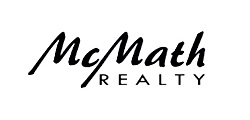As a landlord, the one time when you are most likely to face a dispute with your tenant is when the time comes to return or withhold the security deposit. Most tenants thinks that they deserves to be refunded their entire security deposit, regardless of how much damage they may have done to your property.
You can protect yourself in this situation by having some standard procedures in place at the time that the lease is signed and the tenant moves in to the property. Your tenant should acknowledge the current condition of the property in writing prior to moving in to the space. In the event that there is a dispute later on about the initial condition of the space, you have some solid proof.
New landlords should be sure to verify the laws in their state pertaining to security deposits. The rules vary by state, but most states stipulate how much you can charge for a security deposit, how much interest you must pay to the tenant on the deposit, and how long you have to evaluate the property and return the deposit after the tenant moves out of the space. If you don’t follow the rules and the tenant takes you to court, they can actually request that you be required to pay them three times the amount of the deposit. Obviously, this can wind up being a big expense, so it is worth your time and effort to get it right the first time around.
Best Practices
Don’t let those prospects scare you. Being a landlord is still a rewarding and worthwhile experience; you just need to learn the ropes from those who are more experienced than you. Follow these best practices for security deposits.
Conduct an inspection of the property together with the tenant on the day that the tenant signs the lease, before you turn over the keys. Together, you should make notes of any damage to the property that could be cause for withholding a security deposit. Be sure to include notes as to any stains in the carpet, scratches in the paint, or damage to appliances. Take pictures to clearly illustrate the existing damage that is being included in the report. Take additional pictures to verify the good condition of the remaining spaces. After you have carefully inspected the space together, have the tenant sign and date the inspection report. Make copies of the report, and provide one to the tenant for their records.
Conduct another inspection of the property with the tenant on the day that the tenant will move out. Include the tenant in this process so that they can witness any damage that you discover. Again, take pictures to complete your inspection report. Ask the tenant to sign the report acknowledging your findings. If the tenant refuses to sign the report, make a note on the report that signature was refused.
After the tenant moves out and you begin making repairs, be sure to keep receipts for any materials and labor expended in order to correct damage caused by the previous tenant. In the event that you need to go to court, you can show the judge how much you had to spend to repair the space.
Once the repairs are complete, you can determine how much of the security deposit needs to be returned to the tenant. Deduct any outstanding fees and the cost of repairs.
If you are interested in becoming a landlord, get in touch with McMath Realty. We provide property management services in Phoenix, Scottsdale, and surrounding area, so we can handle all of the details like inspections and security deposits for you.
